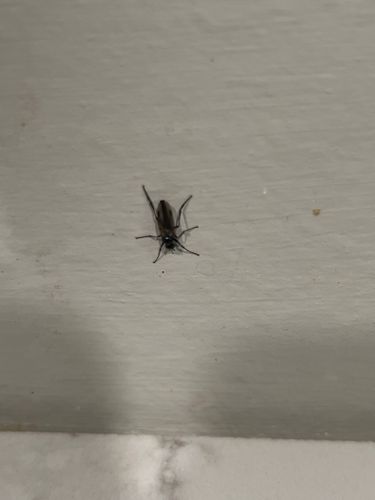Ant Wasp
Scientific Name: Possibly Laphria spp. or similar robust robber fly, or a type of parasitic wasp that mimics an ant, though hard to tell definitively from this angle.
Order & Family: Hymenoptera (wasps and ants) or Diptera (robber flies)
Size: Typically 10-30 mm, but can vary by species.

Natural Habitat
Varies widely depending on the exact species. Robber flies are often found in open, sunny areas with vegetation, while many ant-mimicking wasps are found in diverse terrestrial habitats.
Diet & Feeding
Predatory. Many ant-mimicking wasps are parasitic on other insects, laying eggs on or in their hosts. Robber flies are voracious predators of other insects, including flies, bees, wasps, and beetles.
Behavior Patterns
The image shows an insect with a robust body and long legs, which could be consistent with a robber fly (family Asilidae) or a type of parasitic wasp. Robber flies are known for their aggressive predatory behavior, often ambushing prey in flight. Ant-mimicking wasps use their resemblance to ants as a defense mechanism or to approach ant nests for parasitism. Without clearer details of wings, antennae, and mouthparts, it's difficult to be precise.
Risks & Benefits
Generally beneficial as predators of other insects, helping to control pest populations. Robber flies can sometimes bite if handled, though it is usually not severe. Some parasitic wasps play a crucial role in biological pest control. No significant risks to humans from either group under normal circumstances.
Identified on: 10/14/2025